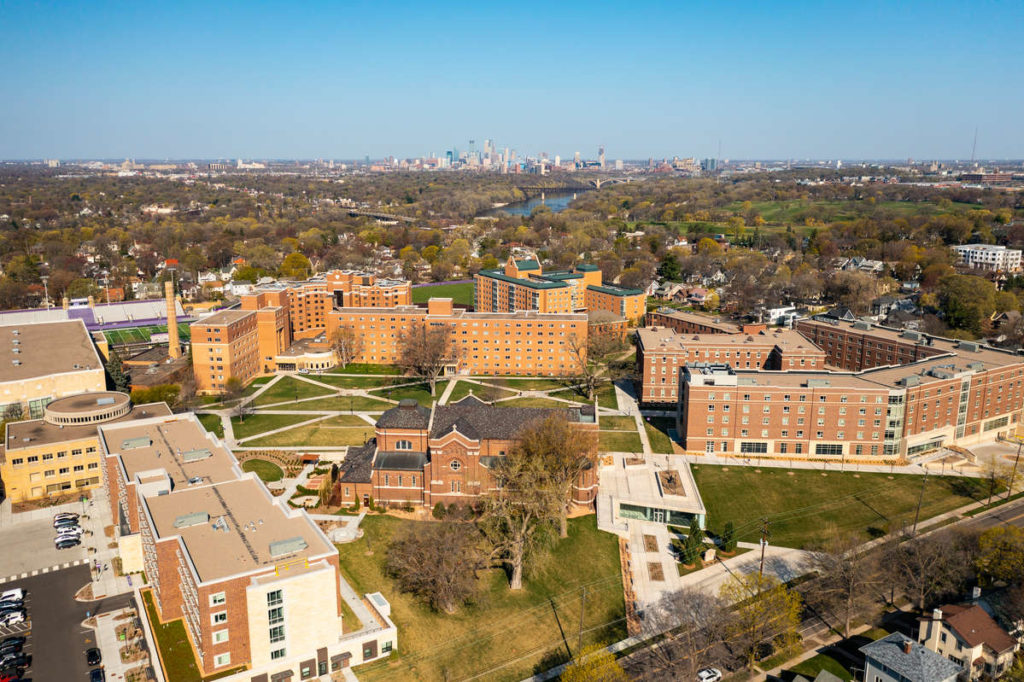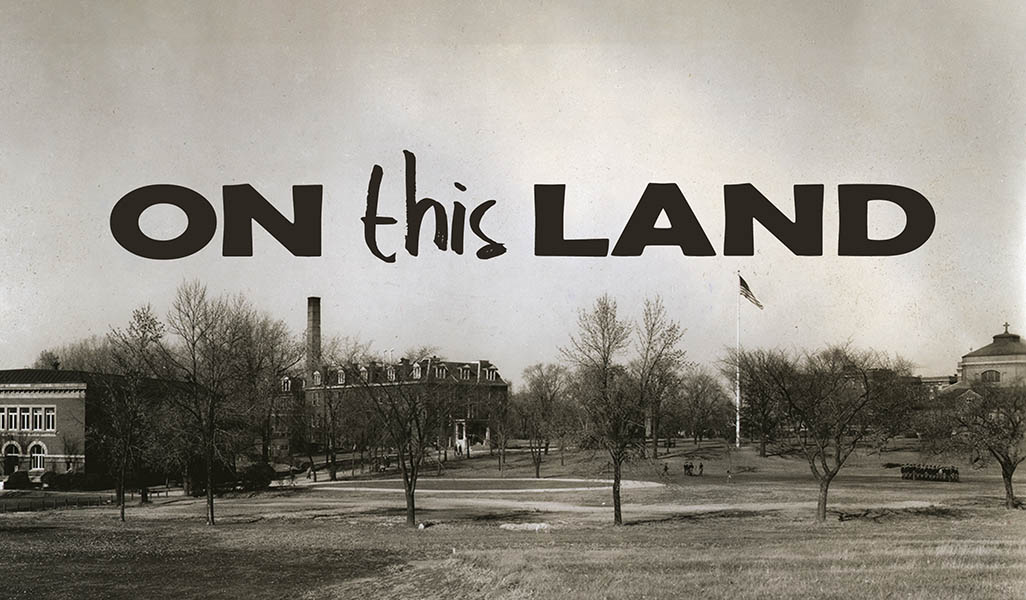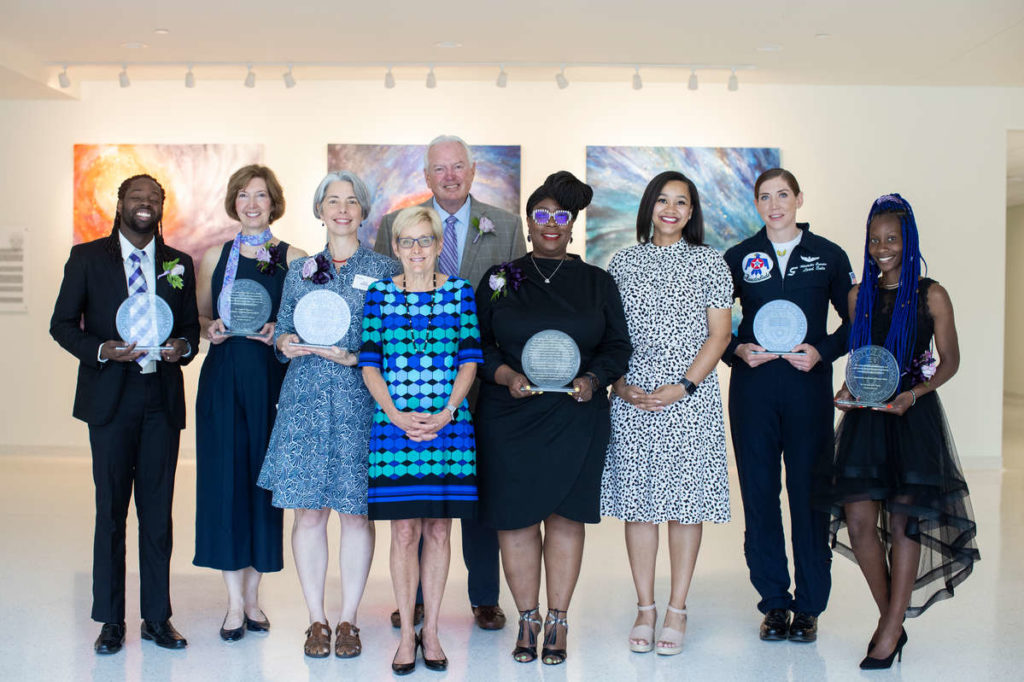As a Catholic institution dedicated to the pursuit of truth, the University of St. Thomas recognizes that it occupies the ancestral and current homelands of the Dakota people, ‘Mni Sota Makoce.’”
This is a sentence from the university’s land acknowledgment, which includes both a long-form and short-form version. You’ll hear this statement read at meetings and events at St. Thomas, including commencement ceremonies, Board of Trustees meetings and student, faculty and staff orientations.
While a land acknowledgment recognizes and honors Indigenous peoples as traditional stewards of the land, it’s more than that. The St. Thomas land acknowledgment condemns “acts of evil, including genocide and forced assimilation done in the name of white supremacy and the continued oppression of Indigenous peoples on the land that belongs to them.”
The university recognizes that centuries of displacement, dispossession and discrimination against Indigenous people are not wiped away by a few words spoken at the start of events, but sees the statement implementation as a step toward its strategic commitment to foster belonging and dismantle racism.
“[The land acknowledgment] recognizes how the actions of our colonial past have created the present we now see, and our responsibility of changing this pattern in our future," said Alex Hernandez-Siegel, director of the Office of Student Diversity and Inclusion Services. “It is recognizing and rectifying the injustice we see systematically in our country.”

The development of the land acknowledgment at St. Thomas can be traced back to 2018.
Associate Professor and Justice and Peace Studies Program Director Mike Klein said there was a confluence of university interest in the idea. Several people and units at the university raised the issue of land acknowledgment including the Undergraduate Student Government.
At the time, Markku Makinen ’20 was collaborating with Klein on a summer research project into Dakota land on the site where St. Thomas is located.
“At the end of my paper, I suggested next steps that Mike and I discussed St. Thomas could take,” said Makinen, who now is working toward a graduate degree in the Leadership in Student Affairs program. “One step was a land acknowledgment or plaque.”
Creating a plan
After receiving Makinen’s suggestions, Klein collaborated with Hernandez-Siegel; Jacob Jurss, adjunct professor in the Department of History; and Mads Clark, interim assistant director of the Office of Student Diversity and Inclusion Services. With support from senior leadership, they formed the University of St. Thomas Land Acknowledgment Committee.
The university’s land acknowledgement webpage provides insight into the crafting of the statement, saying it was designed to, “...not only recognize how past actions of colonialism in the United States have been central to the marginalization of Indigenous peoples, particularly in Minnesota, but also how the University of St. Thomas can frame its mission priorities in developing an environment of moral leadership in the education of our students.”
A first step
The St. Thomas land acknowledgment, which was rolled out last March, is divided into three paragraphs: an acknowl-edgment that the Dakota, Ojibwe and Ho-Chunk histories are tied to St. Thomas and Minnesota; a list of acts that nonnative people engaged in; and a commitment of course change by the university.
This is just a first step. “Fundamentally, these are words, and words without action ring hollow,” Jurss said. “We must better understand American history in order to begin to provide necessary context of both contemporary issues and point toward potential action steps.”
Klein said that the work ahead involves “truth-telling, relationship-building and justice-doing.”
He added that numerous opportunities to take action exist for the St. Thomas community, and that they are exploring possibilities.
“The list of possibilities is endless,” Jurss said. “It can be as creative as we’re willing to be brave.“







